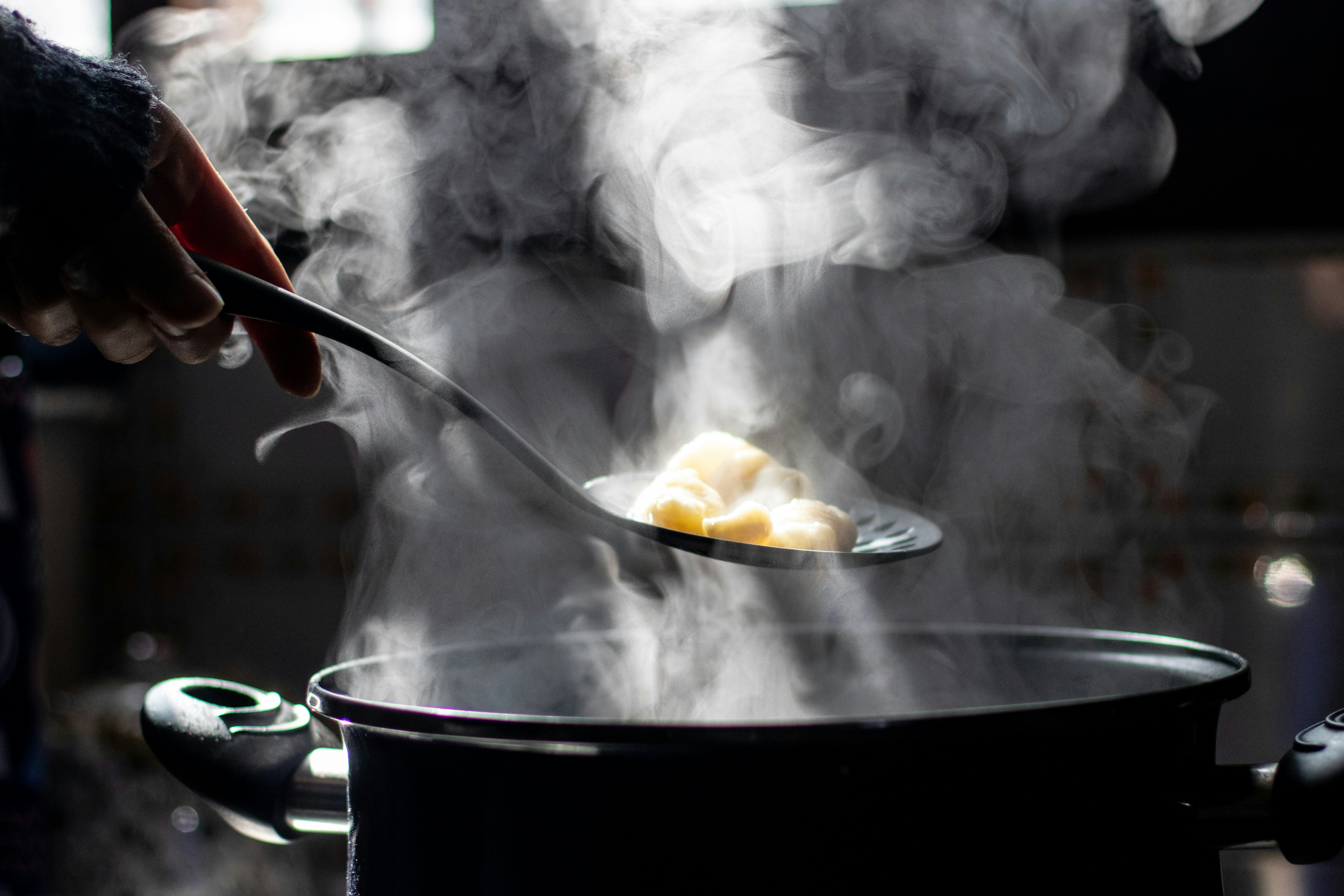Culinary Cartography: Discover Global Flavors Through Local Ingredients
Have you ever fantasized about tasting the world without leaving your kitchen? Culinary cartography isn’t just a trendy phrase for food maps; it’s a gateway to exploring diverse cultures and flavors through the local ingredients that define them. Imagine crafting dishes that take you on a flavor journey around the globe, all while using fresh ingredients sourced locally. In this guide, we’ll navigate this delectable terrain, offering recipes and cooking tips that not only make your meals exciting but also introduce you to the aromatic nuances of various regions.
The Art of Culinary Cartography

Culinary cartography is about mapping out the world through food and cooking techniques. Through local ingredients, we can explore the traditions, history, and culture of a region. One bite of a well-crafted dish can transcend borders and evoke memories and emotions tied to different places. But how do we harness local ingredients to create these journeys?
By incorporating regional elements into your dishes, you enhance not only the flavor but also the story behind what you’re cooking. For example, the vibrant spices of India, fresh herbs of Mediterranean countries, or the hearty grains of Eastern Europe can all beautifully coalesce in your kitchen.
Embracing Local Ingredients: A Journey Begins

When it comes to local ingredients, the options are as varied as the regions they represent. Depending on your location, you might have access to a variety of fruits, vegetables, grains, and herbs to work with. To craft your culinary journeys, start by visiting local farmers' markets, farm stands, or community-supported agriculture (CSA) programs. Each product on display carries a story, adding depth to your meal.
For instance, you might choose to incorporate kale from a nearby farm into a Mediterranean-inspired salad with feta and olives, creating an unexpected bridge between two culinary worlds.
Flavor Profiles: Understanding the Palette of Your Local Ingredients

Just as artists blend colors on a palette, chefs combine flavors to create breathtaking dishes. Understanding the primary flavor profiles—sweet, salty, sour, bitter, and umami—associated with local ingredients can significantly enhance your culinary skills. Each region often has its signature flavor profile that can serve as a guide in creating authentic meals.
For example, the sweet and spicy notes of American Southern cooking can pair beautifully with local vegetables like sweet potatoes and collard greens. Conversely, the umami-packed richness prevalent in Asian cuisines often makes use of soy sauce, miso, or fermentation techniques that could incorporate your area’s unique mushrooms or local fish.
Recipe Exploration: Global Classics Made Local

1. Italian Ratatouille with Local Zucchini and Heirloom Tomatoes
Ratatouille is a classic French dish known for its rustic charm and use of seasonal vegetables. By incorporating your local varieties—like zucchini and heirloom tomatoes—you can create a dish that honors both French traditions and local agriculture. Roasting these vegetables with olive oil and sprigs of fresh thyme can yield a flavorful, aromatic dish that speaks to your community’s bounty.
2. Japanese Miso Soup with Locally Foraged Seaweed
Miso soup is a beloved staple that brings warmth and comfort. Use locally foraged seaweed, which can be found in coastal areas, alongside fresh tofu from local farms. This soup is both nourishing and a reflection of the ocean’s touch.
To elevate the experience, pair it with unique flavor pairings that surprise and delight the palate.
Spices That Tell Stories

Spices often carry the tales of explorers, traders, and cultures ripe with exploration. When you cook using spices that tell stories of their origin—like cumin from the Middle East or turmeric from India—you invite those stories into your kitchen.
For an engaging experience, try creating a spice blend that reflects your own journey through cooking. Combine your local herbs with imported spices to create a unique seasoning that can be used in various dishes. This practice not only expands your culinary repertoire but also deepens your understanding of global flavors.
Transforming Cooking Habits

Engaging with local ingredients encourages a shift in cooking habits, promoting seasonality in your meals. As you start to create dishes that celebrate what's at peak freshness, you'll find that your palate is more attuned to the changing seasons.
Learning about these ingredients can lead to a sense of purpose in the kitchen as you embrace sustainable cooking practices. For instance, getting to know the nuances of fermentation during the cooler months can give you access to an entirely different flavor experience with your local produce, perhaps even delving into fermentation techniques that enhance preservation and flavor.
Meal Diversity: Crafting a Month of Recipes

To help you get going on this culinary journey, consider crafting a monthly meal plan that incorporates various cuisines. Surprise your palate while ensuring you utilize fresh, local produce. Start with Mexican tacos filled with locally sourced corn and beans, travel through Thai green curry utilizing fresh basil and locally-grown Thai eggplants, and round off the month with a classic Moroccan tagine featuring seasonal root vegetables.
Building Community Through Cooking

Cooking with local ingredients doesn’t only elevate your dishes—it can foster community spirit. Organize cooking sessions with friends or family where everyone brings a local ingredient to share. This interactive experience encourages cultural exchange and sparks lively conversations about the histories tied to each ingredient.
With cooking workshops and community events gaining popularity, consider attending or organizing one to explore these culinary narratives further. Whether it’s an Indian curry night or a French pastry workshop, engaging with others heightens the experience of exploring flavors.
Discovering Nostalgia in Food

Food is closely tied to memory; the aroma of dishes often evokes nostalgia. Recreate the comfort foods of your childhood using local twists. For example, if you grew up enjoying spaghetti, consider making a zesty local twist using heirloom tomatoes and fresh buffalo mozzarella instead of the usual canned options.
Such adaptations keep lasting memories alive while also allowing local ingredients to flourish. This blend of the old and the new is what keeps culinary cartography vibrant and relevant.
Interactive Cooking Experiences

Consider exploring creative cooking techniques for deeper engagement. Try out sensory cooking experiences where you engage all five senses—it’s a fun way to transform your kitchen into a culinary studio.
Apps to Explore Local Ingredients
In today’s digital age, various apps are available to help you identify in-season ingredients in your area. These apps often detail the best use for particular fruits and vegetables, linking you to recipes and local farmers. Utilize technology to make cooking with local ingredients more accessible, and don’t shy away from sharing your new creations on social platforms to inspire others!
Navigating Food Preservation Techniques
As your understanding of local flavors deepens, consider learning about food preservation techniques that can help diverge into varieties of flavors. Techniques like pickling, fermenting, and curing allow you to enjoy local ingredients long after their season has passed.
This topic is particularly resonant in discussions about sustainability, as preserving food diminishes waste and enhances pantry staples. Delve into local guidebooks or online resources about preservation techniques tied to your area’s cultural history for an enriched experience.
Final Thoughts: Your Culinary Journey Awaits
Embarking on a culinary journey through local ingredients can transform the way you perceive food. Every ingredient tells a story, and utilizing local produce opens doors to previously untraveled culinary landscapes. With the insights, recipes, and cooking tips provided, you are now equipped to take on your culinary cartography quest.
Celebrate the rich tapestry of flavors your locality offers! Be adventurous; synthesize your findings into your cooking and let the world discover the wonders of flavors through your plates. As you become part of a vast community of home chefs and food lovers, remember that the essence of culinary cartography isn’t just about the end dish but the journey it takes to explore flavors, cultures, and stories through local ingredients.


